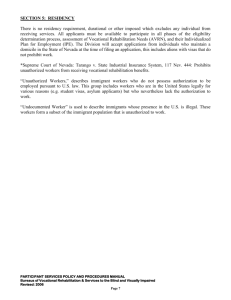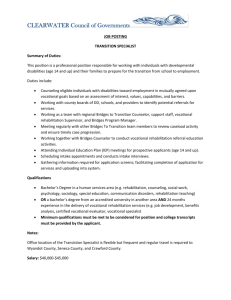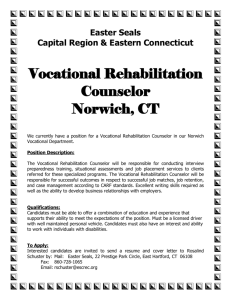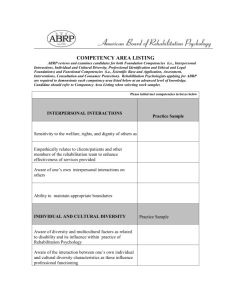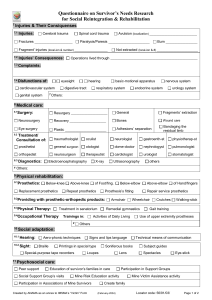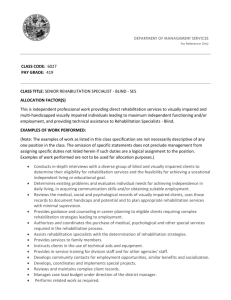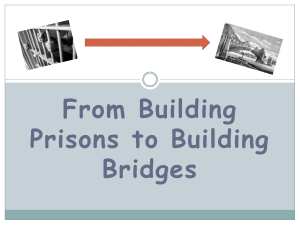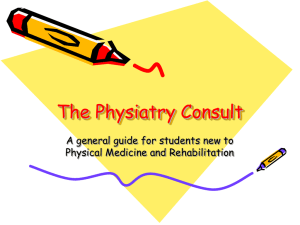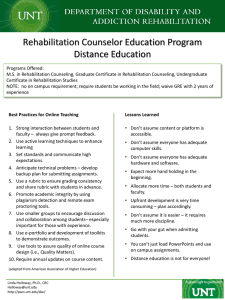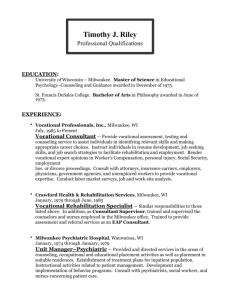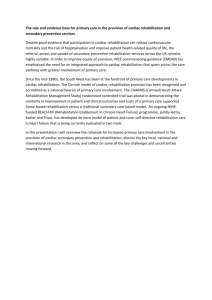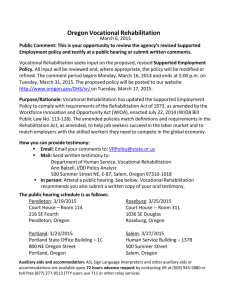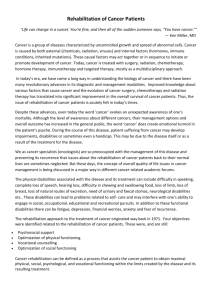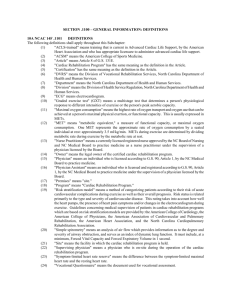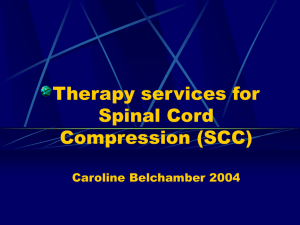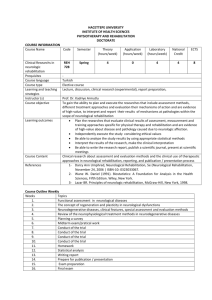Acquired Brain Injury Powerpoint
advertisement
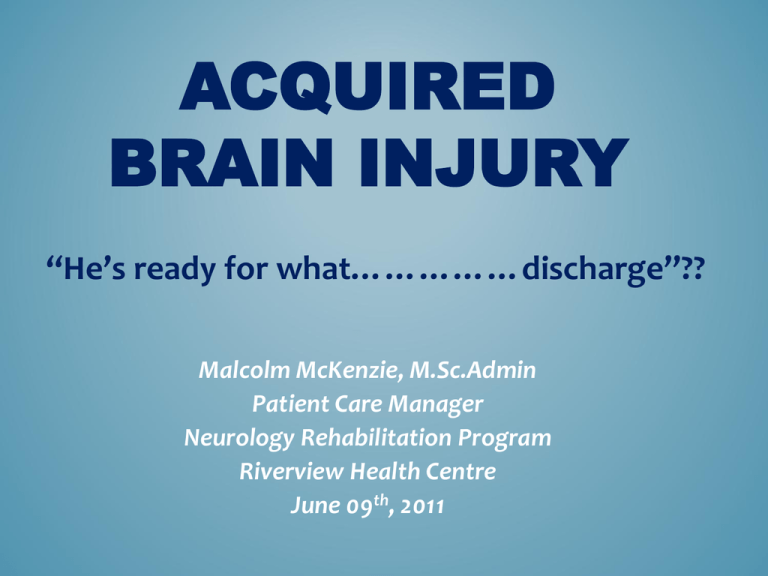
ACQUIRED BRAIN INJURY “He’s ready for what……………discharge”?? Malcolm McKenzie, M.Sc.Admin Patient Care Manager Neurology Rehabilitation Program Riverview Health Centre June 09th, 2011 INTRODUCTION ACQUIRED BRAIN INJURY • What is it? • An Analogy LOOK AT THE CHART AND SAY THE COLOR NOT THE WORD. YELLOW BLUE ORANGE BLACK RED GREEN PURPLE YELLOW RED ORANGE GREEN BLUE GOAL OF REHABILITATION • Role of rehabilitation teams in helping brain injury survivors through difficult crises in reaching their highest functional level of independence. • May be short duration or a continuous lifelong process • Specific goals – dependent on the survivor’s individual capacity Specific Goals continued • To promote adaptation and adjustment of the survivor and family to a changed life • To emphasize abilities to promote adaptation or adjustment • To return to successful function within the community. PROCESS What are we dealing with? • Individual personalities and support systems • Involves a problem-solving approach that is based on the process of assessment, planning, interventions and evaluation. • Survivors / families better informed today and they often challenge staff/caregivers. PREDICTORS OF FUNCTIONAL RECOVERY REHABILITATION POTENTIAL GOOD POTENTIAL POOR POTENTIAL • Strong willed and determined • Gives up easily • Under 21 years of age • Over 40 years of age • Similar pre-injury/post-injury vocational abilities • Wide gap in pre/post injury vocational abilities • No previous history of brain insult • History of previous brain insult • Good stress management skills • Poor stress management skills • Good social relationships • Good character and self-control • Intact family • Good relationship with family • High I.Q. • No history of drug / alcohol abuse TEAM INVOLVEMENT • Team approach is the foundation of rehabilitation care. • Treat the multiple needs of the ‘whole’ person. • The Interdisciplinary team (IDT) has interactive partnerships. • The patient is the family. • Family support is key. FAMILY ASSESSMENT / CHALLENGES • Emotional status • Cultural barriers • Knowledge • Potential care-giver stress / inability to cope • Infantalization of survivor SERVICE DELIVERY MODEL • • • • Physical Functioning Cognitive Functioning Emotional Functioning Social and Community Functioning INDIVIDUAL TREATMENT INTERVENTION • Values and Beliefs • Functional Levels • Continuum of Care READINESS FOR COMMUNITY WHAT’S NEXT?? • • • • • • • Dealing with week-end Leaves of Absence Telerehabilitation may be required Re-integration versus Re-entry Vocational Evaluation Work Adjustment Retraining Job placement CONCLUSION • An overview of rehabilitation – philosophy, values, goals and models of care • Emphasis on teams and family assessment • Importance of family involvement • Continuum of care QUESTIONS…
